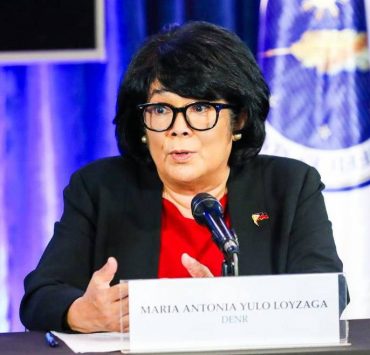Manila Water, Maynilad bills up next year
Households in Metro Manila and nearby provinces should brace for an increase in their water bills beginning next year as the Metropolitan Waterworks and Sewerage System (MWSS) Regulatory Office has approved new tariff rates for two of the country’s biggest concessionaires.MWSS chief regulator Patrick Ty announced on Wednesday that customers of Maynilad Water Services Inc., whose concession area covers the cities of Manila, Pasay, Parañaque, Caloocan, Muntinlupa, Las Piñas, Valenzuela, Navotas, Malabon, and parts of Makati, Quezon City and Cavite province, would see an average increase of P7.87 per cubic meter in their monthly water bill.
For customers consuming 10 cubic meters a month, this translates to an increase of P45.36; P100.67 for those consuming 20 cubic meters, and P205.87 for those using 30 cubic meters. The bill of low-income customers under the concessionaire’s lifeline program consuming less than 10 cubic meters will rise by P4.74.
Manila Water Co. Inc., which serves households in parts of Mandaluyong, Makati, Quezon City, Pasig, Pateros, San Juan, Taguig, Marikina and Rizal province, was allowed to raise its rate by an average of P6.41 per cubic meter.
This translates to an increase of P2.96 a month for lifeline customers using less than 10 cubic meters; P34.12 for those consuming 10 cubic meters; P76.68 for those using 20 cubic meters, and P154.55 for users of 30 cubic meters.
Adjusted for inflation
Last year, the MWSS approved a rate rebasing for the period 2023-2027.
Rate rebasing refers to the regular performance review and tariff adjustment that sets the maximum rates that concessionaires may charge to allow them to recover their investments and expenditures.
For 2023, the MWSS approved a P3.29-per-cubic-meter increase for Maynilad, and P8.04 for Manila Water.
Maynilad’s 2023 rate increase was relatively smaller than that of Manila Water’s due mainly to its lower capital expenditure (capex) spending.
This was the reason why the MWSS pushed Maynilad to implement more service improvement programs, prompting the company to spend P16.6 billion in capex this year, Ty said.
This was the biggest amount shelled out by Maynilad in a year in the course of its 25-year concession, according to Ty, and the company was expected to end 2023 with P18 billion to P20 billion in capex spending.
The tariff adjustment factored in inflation, Ty explained. “We adjusted rates by inflation. The rates during the rebasing [last year] were based on the 2022 value, so it needs to be adjusted every year.”
Rate increases would be conditional in 2026 and 2027, Ty added, as the adjustment would depend on the service delivery and capex spending of the two companies in those years.
Boosting supply
“Regular households will be able to shoulder the tariff adjustment, but we feel that this is a necessary burden to ensure that proper service is given to consumers especially during El Niño,” Ty noted, referring to the weather phenomenon characterized by long periods of dry spells.
El Niño is expected to affect the country starting in the first quarter of 2024.
Maynilad and Manila Water implemented projects in 2023 meant to increase supply to ensure that consumers have adequate water supply next year.
These included Manila Water’s Wawa-Calawis Phase 1 project, which would add 80 million liters a day (MLD) of supply and the 50-MLD East Bay Phase 1.
The second phase of the East Bay project is slated for completion next year, adding 200 MLD of available supply.
Meanwhile, Maynilad was able to develop the Anabu, Poblacion, Putatan, Parañaque and Julian water treatment plants for a combined additional capacity of 214.6 MLD. INQ

















